At a time when European missionaries and the deracinated generation of Derozio’s Young Bengal threatened to overwhelm Bengal’s Hindu society, one man stood tall as the Great Himalayas, in order to resist that deluge of hegemonic and supremacist foreign ideas and ideals. Almost single-handedly this man steered the Hindu society of Bengal through two long and tumultuous decades in the middle of the nineteenth century (1840s to 1860s), and helped it avoid a catastrophic socio-cultural setback, one that could have endangered its very existence in the subsequent decades.
Such is the legacy of Maharshi Debendranath Tagore (15 May 1817 – 19 January 1905), a man of many parts – religious leader, theologian, author, translator, entrepreneur, nationalist organiser, and father to some of the most illustrious sons of India, including Rabindranath Tagore. Best known as the rejuvenator and undisputed guiding light of the Brahmo Samaj in the post-Rammohun Roy era, Maharshi Debendranath epitomised the qualities of the ideal Brahmin. The past week saw his 207th birthday; but hardly anyone seemed to remember or commemorate it in a manner as befits the monumental legacy of this pioneer of Indian nationalism and fearless crusader against forcible religious conversions.
Despite Maharshi Debendranath’s enormous contribution to the Hindu society, to Bengal and to India, it is lamentable that he seldom features in the current national discourse on Modern India and her history in a manner that is commensurate with his historical role and far-reaching impact; and if at all his name finds its way to the chaotic sphere of contemporary popular discourse, it often carries a baggage of negativity and cynicism – even contempt! This is a stark demonstration of how ungrateful and insensitive posterity can be towards those who make gigantic sacrifices, precisely for the cause of its freedom and prosperity. In the case of Maharshi Debendranath, such callous forgetfulness on the present generation’s part can only derive from a pitiful lack of awareness about the Maharshi and his life’s work.
At the young age of twenty-four, Debendranath revitalised the Brahmo Samaj that had been established by Raja Rammohun Roy in 1828, by merging it with the ‘Tattvabodhini Sabha’, a society that Debendranath had formed about a decade later, in 1839. The objectives of the Tattvabodhini Sabha, in Debendranath’s own words, were as follows: to come to a realisation of the nature of the Absolute Principle or Brahman, to discern the truths contained in the Hindu scriptures, and to propagate Brahma-Vidyā (the Knowledge of the Brahman) as expounded in the Upanishads. Since the day of this merger and until the last day of his life, Maharshi remained a beacon to the Brahmo Samaj in particular and the Hindu society of Bengal in general, firmly securing his place in history as a leading protagonist of the phenomenon that has been described as the Bengal Renaissance or the Indian Renaissance of the nineteenth century.
Despite being born (in the year 1817) to the exceedingly successful Calcutta-based entrepreneur-philanthropist ‘Prince’ Dwarkanath Tagore, and brought up amidst extreme luxury and riches, Debendranath’s life took a deeply spiritual turn quite early in his life (at age twenty-one) when he encountered an extraordinarily blissful and ineffable experience on the occasion of his grandmother’s death. At the moment of that encounter, he was staying on the riverbank near the Nimtala cremation ghat upon River Ganga in Calcutta. It was a full-moon night; and Hari-nam Kirtan was being performed before his dying grandmother. Debendranath writes in his autobiography, unostentatiously titled Atma-Jivani (Bengali for autobiography), that the sound of this Kirtan kept floating across to where he was seated, when suddenly he felt overwhelmed by a strong sense of detachment from samsara, which gave him a bliss that was hitherto unknown to him.
Debendranath dearly loved his grandmother, who was an exceptionally pious lady; and her death, experienced by Debendranath from up-close, coupled with a new but overwhelming sense of dispassion towards worldly affairs, brought a revolutionary change in the young man’s heart. By his own admission, from that epiphanic moment onwards, he felt a great repulsion for the rich and luxurious life that he had been living thus far. Now Debendranath grew restless to know God – not merely as a theoretical concept or entity, but as reality itself. The experience that he had on the night before his grandmother’s passing created in him an insatiable thirst for a spiritual life. He wanted to dwell in that night’s experience all over again, and dwell in it constantly, but could no longer do so. That experience and the thirst of reliving it would go on to define his life’s vocation.
Greatly agitated and distressed by his inability to relive that blissful, mystical experience, Debendranath began an earnest search for it and its root. Engaging himself in long and deep introspections about life’s purpose and the nature of the Divine, Debendranath spent hours at a stretch whenever he could curve out some time from an otherwise busy day’s schedule. He began to seek and cherish solitude. He learnt Sanskrit from a pundit to be able to read the Hindu scriptures, which he began soon by meticulously studying the Mahabharata. In no time he grew fond of the Itihasa epic. He found great solace in the lofty shloka-s on dharma in the Mahabharata and in the stories of Srimad Bhagavata Purana. (The Bhagavata Purana would continue to provide him solace and joy, even at the time when he had grown up to be a mature leader of the Brahmo Samaj. When he became agitated due to the controversies created by some members of the Brahmo Samaj, or if any material concern precipitated by some member of the family troubled him, he used to seek solitude outside the city and read the Bhagvata Purana.) At the same time, he voraciously read the works of European philosophers – Locke, Hume, La Mettrie, Holbach, Boyle, and Reid, among others. But he was yet to find a source that would take him back to that fount of bliss which he had once experienced at the cremation ghat upon Ganga. With each passing day, Debendranath grew more and more restless to know and feel the presence of God all around as well as within himself – in his own being, and as a palpably real, first-hand experience. In his autobiography, Debendranath describes his predicament from this period as comparable with a story related by Devarshi Narada to Maharshi Veda Vyasa. In that story, Narada spoke of his previous birth, wherein he had caught a luminous glimpse of Brahman for a few blissful moments, only to lose it afterwards and grow extremely restless as a result.
After indulging in reading or hearing the scriptures, shravana, Debendranath undertook a rigorous routine of manana, or cogitating on the nature of the creation and the Creator. As a result of those deep and sincere cogitations, he came to the conclusion that the Creator must be infinite in nature. This gave him a partial respite from the acute restlessness that he was feeling at the time. All this while, he also had to look after his father’s business and estates; but his mind was constantly devoted to the search for spiritual fulfilment. He was looking for something solid, something substantial, upon which his conclusions could find their mooring – like an irrefutable and unshakeable foundation that would pass all trials in the crucible of life, and of an increasingly sceptical world.
This solidity he finally found when he chanced upon a page of the Ishopanishad. As soon as he read and understood the purport of the very first verse of that Ancient Upanishad, he felt immensely grateful and at peace with himself and the world around him. Having thus established his belief firmly in the truths expounded in the Upanishads, he proceeded to undertake a systematic training in the Vedas from a traditional Vedic pundit from Southern India. In his autobiography, Debendranath describes how his Upanishadic studies filled his heart with “brahmānanda”, the joy accrued from a direct experience of the Brahman, and how it went on revealing to him the deepest layers of meaning of the scriptures. Next, a desire arose in his heart to propagate this light of truth he had thus gained from the Upanishads. Soon he founded a society for the express purpose of studying, understanding, and propagating the ‘tattva’ or the true knowledge of the Upanishads, i.e., knowledge of the Brahman. Initially, it consisted of only ten members: Debendranath’s younger brothers, some relatives, and a few friends. This society, founded on October 6, 1839, came to be known as the Tattvabodhini Sabha, meaning, a society for the elucidation of tattva. Gradually, the society grew in size and renown; and some of the best minds of mid-nineteenth-century Bengal started frequenting it.
Around this time, the famous Bengali poet Ishwar Chandra Gupta introduced Debendranath to Akshay Kumar Dutta, who promptly joined the Tattvabodhini Sabha. Dutta was a talented young writer and a rationalist, and in no time, he became Debendranath’s close associate in running the activities of the Sabha. Recognising his talent, Debendranath put Dutta in charge of the Tattvabodhini Patrika, the organ of the eponymous society, which Debendranath had recently started to publish. As editor and writer at Tattvabodhini, Dutta contributed enormously to an overall upgradation of the quality of Bengali journalism and editorial work – thus according the Bengali journal a pride of place in an era when the only journals that readers held in high regard happened to be English newspapers/journals. Dutta was able to achieve this remarkable feat because Debendranath provided him with the requisite moral and financial support.
The Tattvabodhini Sabha convened its sessions once every month. To lead these sessions, Debendranath invited Ram Chandra Vidyabagish, who was the younger sibling of Swami Hariharananda Tirtha – a great Tantrika who gave mantra diksha or formal initiation into Tantra sadhana to Raja Rammohun Roy. Vidyabagish was a great scholar of Sanskrit and Vedanta in his own right. He taught at the Vedanta College established by Raja Rammohun Roy and later at the Sanskrit College. Vidyabagish had been a friend and collaborator of Raja Rammohun Roy, who appointed him as the very first Acharya as well as the first secretary of the Brahmo Samaj when the organisation began functioning in the year 1828. After the Raja’s untimely demise in faraway London, it was Vidyabagish who had somehow kept the fledgling Brahmo Samaj aloft, with the financial aid of Debendranath’s father Prince Dwarkanath who, interestingly enough, was a devout Vaishnavite. Upon Debendranath’s invitation, now Vidyabagish also accepted the position of Acharya at the Tattvabodhini Sabha. As Acharya, Vidyabagish used to give upadeśa or sermons at the monthly sessions of the Sabha. Debendranath notes in his autobiography that each of his sermons invariably contained the Pranava-Prakalpa verses. These verses, traditionally attributed to Maharshi Vyasa, eulogise the formless infinite Brahman while admitting the human limitations due to which the formless is often worshipped in various limited forms. These verses find a mention in Raja Rammohun Roy’s polemical essay “Bhattacharyer Sahit Vichar”, and they were clearly a favourite of Debendranath.
In the year 1841, Debendranath decided to take the reach of the Tattvabodhini Sabha’s message to the next level. He made elaborate arrangements for a grand session of the Sabha, and sent printed invitations to every employee in every business establishment and office located in the city of Calcutta. A great number of people had gathered at the Sabha’s premises on the appointed hour of the ceremony. The ceremonies, planned meticulously by Debendranath, began with a dramatic tumult of conch shells, bells, and trumpets. All the doors of the Sabha Hall were opened at once and all the guests were personally ushered into the hall by Debendranath and his associates. As soon as the guests took their seats, as many as twenty Brahmins hailing from Southern India, each dressed in crimson broadcloth, began chanting the Vedas in one voice. With Ram Chandra Vidyabagish presiding over the ceremonies, Debendranath gave a remarkable speech in Bengali on that occasion. Therein he declared:
“There’s hardly any doubt that, at the present moment, knowledge is spreading through discussions that take place in the English language, and many people in this country are getting enlightened as well. Such people are feeling less and less inclined to worship the Divine in wooden or stone images, as is done by unenlightened folks. Due to Vedanta lacking in publicity, the enlightened section isn’t even aware of the essence of our shastra-s – which is that the Divine is infinite, pure consciousness, all-pervading, and beyond name, form or intellect. Thus, failing to find such pure knowledge of Brahman in their own religion, they look for it in the scriptures of foreign religionists. They end up growing a firm conviction that our shastra-s are all about worshipping finite forms; and therefore, they tend to follow whatever scripture they believe to be superior than ours. But if Vedanta is made widely known, then our people will never feel the need to pursue any foreign religion. This is how we have decided to work towards the protection of our own Hindu religion.”
Through this speech, Debendranath made clear the historical necessity as well as the context of the Brahmo Samaj movement, which he would join in the very next year. After joining the Brahmo Samaj, Debendranath took charge of the movement made leaderless by the passing of Raja Rammohun Roy in 1833, and brought about a few important changes with regard to its functioning. Prior to Debendranath’s joining, only Brahmins could listen to the chanting of the Vedas at the Brahmo Samaj. Debendranath changed this convention to allow everyone, irrespective of their caste, to listen to the Vedas. He also started offering a merit-based scholarship to students who would learn Sanskrit and the Vedas in order to teach the Upanishads at the Brahmo Samaj. He sent several such sponsored students from Bengal to Kashi, for the express purpose of pursuing advanced Vedic studies from the pundits of Varanasi.
In the year 1843, Debendranath, along with Akshay Kumar Dutta and several of his other associates at the Tattvabodhini Sabha, took formal initiation or diksha in the Brahmo sadhana from Ram Chandra Vidyabagish. This event marked a turning point in the history of the Brahmo Samaj, and indeed of the whole of India as well as Hinduism, for it was from that point onwards that Debendranath formally became the leader of the Brahmo Samaj. In Bangalitva-i Amader Hindutva, cultural commentator and author Devavrata has described Debendranath Tagore as a worthy successor to Raja Rammohun Roy. According to him, the Brahmo Samaj, under Debendranath’s able leadership, became a formidable opponent and the main block of Hindu resistance to the activities of Christian missionaries; because it actively resisted the aggressive conversion drive led by these evangelical missionaries. In this regard, Debendranath had no compunction about joining forces with the orthodox, image-worshipping Hindus. Proving Debendranath’s aforementioned observations on his contemporary English-educated Indians to be accurate, the great historiographer R.C. Majumdar writes:
“Apart from the prestige and power which the missionaries enjoyed as members of the ruling race, particularly among the ignorant masses, several causes combined to impart success to their efforts. The first and most important cause was the spread of the knowledge of English. Educated Indians who were impressed by the Bible and Christian literature, and repulsed by the superstitious practices in their own society, embraced Christianity and their example was followed by less discriminating men. This accounts for a number of converts in the second quarter of the nineteenth century from among high class Hindus, such as Madhusudan Datta and K.M. Banerji.
But the conversion of this class gradually dwindled with the rise of the reforming sects like Brāhma Samāj…and by the end of the 19th century new converts of this class were almost negligible.”
This is exactly where the decisive historical role played by the Brahmo Samaj in general, and by Debendranath in particular, becomes apparent. Apart from converting young Indian men and women, the missionaries launched a most viciously hateful attack on the Hindu religion. A prominent instance of such anti-Hindu rhetoric of hate is the Scottish missionary activist Reverend Duff’s book on India. According to R.C. Majumdar:
“The most disconcerting feature of the activities of Christian missionaries in India was the rabid tone of their criticism – rather abuse – of Hinduism. Even Reverend Alexander Duff, an eminent missionary who lived in India from 1830 to 1863 and had done so much for promoting education and social reforms, lost all balance while assailing Hinduism. The following extract from his book India and the Indian Missions gives us a fair specimen of missionary mentality:
‘Of all the systems of false religion ever fabricated by the perverse ingenuity of fallen man, Hinduism is surely the most stupendous…Of all systems of false religion it is that which seems to embody the largest amount and variety of semblances and counterfeits of divinely revealed facts and doctrines.’
The Tattvabodhinī Patrikā, the organ of the Brāhma Samāj, criticised Duff’s book in the most scathing terms.”
However, Debendranath and his Brahmo Samaj did not stop at merely criticising the atrocities committed by fanatic missionaries in the nineteenth century. The Brahmo Samaj led by Maharshi Debendranath promptly set in motion a well-organised movement on the ground against forcible conversion of Hindus. In the year 1845 Umesh Chandra Sarkar, a student of the Duff School, along with his wife, was converted to Christianity. This incident greatly agitated Debendranath and, as Majumdar observes, “it created a great commotion in Calcutta, and the orthodox Hindus rallied round Devendra-nāth Tagore who had launched a vigorous campaign against such forcible conversion.” The Duff School and the General Assembly’s Institution founded by Duff had, at that time, turned into the epicentre of religious conversion of young impressionable Hindu men and women. In order to counter these institutions, Debendranath joined hands with Raja Radhakanta Deb and established a new institution called the Hindu Hitarthi Vidyalaya on March 1, 1846. Commenting on Debendranath’s efforts in this regard, R.C. Majumdar remarks:
“These efforts…were successful to a large extent and considerably reduced the number of conversions to Christianity. An indirect result of this anti-conversion campaign was the establishment of English school by the Indians in order to draw away students from the missionary schools. Thus, as a result of the campaign mentioned above, a school was established in 1845, providing free instruction to about one thousand Hindu students.”
Debendranath was the only prominent leader after Raja Rammohun Roy who began working towards the inauguration of nationalism in the consciousness of the nineteenth-century Hindu society. He had already laid down the foundations of a national education by setting up the ‘Tattvabodhini Pathshala’ in the June of 1840. He appointed Akshay Kumar Dutta as a teacher of geography and physics in this pathshala (Sanskrit/Bengali for elementary schools). Debendranath’s intention in setting up this school was to disseminate the best and latest developments in the world of knowledge among young Hindu pupils, without having to compromise on his nationalist goal of rekindling patriotism and reverence for the Hindu religion as well as Hindu values among his people. It is for this reason that he insisted on keeping the management of the school under native ownership and running it based on nationalist ideals. Dutta, under the inspiration of Debendranath, wrote a number of textbooks on various subjects in the Bengali language around this time. These were the very first systematically written textbooks on scientific subjects in the Bengali language, that proved to be of great assistance in disseminating modern scientific knowledge among the Indian people.
That same year, Debendranath published a Bengali translation of the Kaṭhopanishad. He also translated several other Upanishads, and these were published one after another along with his Bengali commentary on the texts, in the Tattvabodhini Patrika. Next, he started translating the Rig Veda, and gradually published the work in instalments in the same journal. He then codified the Brahmopāsanā Paddhati or the method of worshipping the Brahman while pursuing a personal spiritual development, following the instructions laid down by Raja Rammohun Roy in a rather short but remarkable tract called Gāyatryā Brahmopāsanā-vidhānaṃ (or, Instructions on Worshipping the Brahman using the Gayatri Mantra). This tract was distilled from the principal Hindu scriptures, such as the Manu-Saṃhitā, the Rig Veda, the Upanishads, the Bhagavad-Gita, the Mahānirvāṇa Tantra, the Yājñavalkya Smṛti, and the Saṃgraha texts of Smārta Raghunandan Bhattacharya. Debendranath made provisions of worshipping methods for two different classes of Brahmo-s: one for those who were interested in carrying out an earnest sadhana or spiritual pursuit through Brahmopāsanā, and another for the common members of the Brahmo Samaj. The late-nineteenth-century cultural commentator Panchkadi Bandyopadhyay notes:
“The Brahmo dharma that Raja Rammohun Roy preached in this country was just another branch of the Tantra dharma. The first few Ullāsa-s [books> of the Mahānirvāṇa Tantra constituted the very foundation of the Adi Brahmo Samaj. The Tantric hymns from those books are still regularly chanted in the Adi Brahmo Samaj premises; and the methods of giving formal initiation [diksha> laid down in it were practised in the Adi Brahmo Samaj as long as Maharshi Debendranath was alive. Even the rites associated with the marriage ceremonies of the Tagore family were in accordance with the Mahānirvāṇa Tantra. Because Brahminical influence in Bengal has grown considerably in recent times, and because of the poor reputation accrued by Tantra across the society thanks to the depravity of some Tantrikas, Raja Rammohun and Maharshi Debendranath placed a garb of Upanishadic dharma on the Mahānirvāṇa Tantra-based Adi Brahmo dharma. The Brahmo dharma was preached among common people on the pretext of the Upanishads, but as far as the sadhana methods of the initiated Brahmo-s were concerned, the system laid down in the Mahānirvāṇa Tantra was treated as paramount.”
Later, when some of his long-time associates showed such inclinations as were antithetical to the patently Hindu character of the Adi Brahmo Samaj, Debendranath did not hesitate to take strict and decisive actions in order to safeguard that Hindu character. Gour Gobinda Roy, a prominent figure of the Brahmo Samaj movement, spoke of the Debendranath-led Adi Brahmo Samaj in the following terms:
“The religion was an organised Hindu monotheism. The members were so many Hindus both in worship and social life. They looked at everything from a Hindu standpoint, they accepted everything which was Hindu in its characters, they rejected everything which was un-Hindu.”
The author Devavrata notes that the Hindu society of Bengal was clearly reinvigorated as a consequence of the socio-religious reforms brought about by the two-pronged leadership of Debendranath’s Brahmo Samaj and Ishwar Chandra Vidyasagar in the three decades following Rammohun’s demise. And that rejuvenation of the Hindu society gave rise to a nationalist political consciousness among Bengalis, who then confidently entered the arena of politics, and started asserting the newly emerging aspirations of Indian nationalism. Key individuals belonging to the Brahmo Samaj, such as Rishi Rajnarayan Basu and Nabagopal Mitra, began organising the Hindu Mela or the ‘National Carnival’ in 1867 under the active patronage of the Tagore family at Calcutta’s Jorasanko and its patriarch, Debendranath. This was the first instance of an Indian and Hindu nationalism asserting itself in an organised, political, and popular manner in the face of the British Empire’s colonial project in India. It was perhaps the great Brahmo organiser Nabagopal Mitra, who, for the very first time, formulated Hindu nationalism and Hindu nation in the following words:
“Hindu nationality is not confined in Bengal. It embraces all of Hindu name and Hindu faith throughout the length and breadth of Hindustan; neither geographical position, nor the language is counted a disability. The Hindus are destined to be a religious nation.”
In 1872, the Brahmo thought-leader Rishi Rajnarayan gave a public lecture titled “Hindu Dharm-er Sreshthata” (i.e., the Superiority of Hindu Religion). This lecture enthused Hindus of both progressive and orthodox inclinations with a peculiar optimism and cheerfulness in the prospects of Hindu/Indian nationalism that constantly characterised the lecturer.
Not only did Debendranath encourage and finance such initiatives undertaken by his close associates Mitra and Basu – he, moreover, gave to these organisational and advocacy-based activism the ultimate offering of his heart’s sincerity: the active participation of his young children. Dwijendranath, Satyendranath, Jyotirindranath, Hemendranath, Somendranath, and the youngest one, Rabindranath – each of Debendranath’s sons put his best creative as well as organisational foot forward to make the annual Hindu Mela celebrations a grand success. The fair ground reverberated with the poetry recitations, songs, and plays written by Satyendranath, Jyotirindranath, and Rabindranath in particular.
Throughout his life, Maharshi Debendranath maintained that Brahmo Dharma is Hindu Dharma. He lived like a Brahmin, wearing the sacred thread or Yajnopavita despite facing a dogged opposition from the fanatic rationalists of his times, and made sure that his progeny underwent the Upanayana as well as other Vedic samskara-s suitable for the Brahmin. When Keshab Sen, once his disciple and closest aide, showed strong inclinations towards Christianity, Maharshi expelled him from the Brahmo Samaj, following which Sen formed the Bharatavarshiya Brahmo Samaj, a new faction. If Maharshi didn’t care about maintaining the sanctity of Hindu Dharma, things would not have taken such a turn.
Plus, following in the footsteps of his great predecessor Raja Rammohun Roy, Maharshi continued the practices of holding Veda-Pāṭha or chanting of the Vedas by Telugu Brahmins at the Brahmo Samaj premises and the formal initiation/Diksha into Brahmo sadhana as laid down in the Brahmopāsanā Paddhati of the Mahānirvāṇa Tantra, Manu-Saṃhitā, and other major Hindu scriptures, as we have already noted above.
In discussing Debendranath’s determination to protect the essential characteristics and ideals of the Hindu society, mention should be made of yet another incident. This time, Akshay Kumar Dutta – the same man whom Debendranath had empowered by offering employment at the Tattvabodhini Pathshala and whose talent as an ace editor he first recognised as well as nurtured at the Tattvabodhini Patrika; a man who closely worked with Debendranath in defending the Hindu society for over a decade, that same man now left Debendranath deeply embarrassed by beginning to oppose the use of the Vedas and Upanishads at the Brahmo Samaj. A rationalist by disposition, Akshay Kumar Dutta in this particular regard took his rationalistic zeal to the level of fanaticism. Dutta’s was, to borrow a phrase from Rabindranath Tagore, “a mind all logic,” which “is like a knife all blade – it makes the hand bleed that uses it.” Akshay Kumar Dutta’s role was somewhat similar in the context of the mature years of the Brahmo Samaj.
Around 1850, after almost seven years of the merger of Debendranath’s Tattvabodhni Sabha into the Brahmo Samaj of Raja Rammohun Roy, Akshay Kumar Dutta started claiming that the Vedas and Upanishads were not infallible. This resulted in a direct clash between him and Debendranath. Dutta lobbied hard among the Brahmos to popularise his view that the Vedas and Upanishads contained irrational claims and even supported image-worshipping; and therefore, he argued haughtily, the Vedas and Upanishads cannot be regarded as infallible nor as authentic sources of religion. At the same time Dutta started attacking Debendranath on his faith in the Upanishads. Some of the ‘Young Bengal’ Derozians, like Ramtanu Lahiri and Ramgopal Ghosh, also joined Dutta in attacking Debendranath and his Tattvabodhini Patrika on this point. Thankfully, Debendranath managed to foil their rebellious design and circumvented the whole clamorous issue by virtue of his sheer wisdom and acumen.
This was possible mainly because Debendranath was, essentially, a Bhakta – a man of immense śraddhā, who was naturally inclined to worshipping the Divine. He thirsted after spiritual fulfilment. He spent a considerable part of his long life in the lap of nature, amid the snow-capped peaks of the Himalayas, seeking solitude, and in it a first-hand, direct experience of the Divine. He lived in the company of the Sikh sādhaka-s, spending long hours with them at the Harimandir in Amritsar, singing bhajans and shabad-s with common Sikh devotees for months on end. He composed Brahmasangeet songs – lyric poetry in praise of the Divine – which were frequently used as hymns in worshipping the Brahman at the Brahmo Samaj. He often danced in ecstasy, forgetting all around him, while singing the praise of the Brahman. With regard to these aspects of his personality, Debendranath can be described to have truly belonged to the league of our medieval bhakti poet-saints, who, like him, stressed on sincere devotion and wondering/wandering after the ecstatic and majestic love of the Divine. This set Debendranath apart from so many other socio-religious reformers who were the typical products of his times, and raised him to the stature of a ‘Maharshi’, a great sage – a venerable epithet in the Hindu tradition, usually set aside for an extraordinarily enlightened spiritual personality, like a Vyasa or a Valmiki.
In contrast, Akshay Kumar Dutta was a dry rationalist who lacked both higher idealism and metaphysical insight. In view of the overall cultural pressure at that point in history on Hinduism – as also on Brahmoism, the then vanguard of Hinduism – coming from aggressively expansionist foreign elements, Dutta’s decision to join forces with the fanatic Derozian atheists was deplorable, to say the least. This only weakened the vanguardist movement of the Brahmo Samaj, and paved the way to its undoing, with the final blow coming from Keshab Sen, an erstwhile disciple-associate of Maharshi Debendranath, a prodigiously talented orator and a religious leader of immense possibilities, who started publicly differing with Maharshi Debendranath.
The Maharshi made sure that personal sadhana and daily worship of the sincere Brahmo seeker, as well as the diksha ceremonies held at the Adi Brahmo Samaj premises continue to draw on Upanishadic passages and Vedic mantras (including the all-important Gayatri Mantra), and that even the congregational upāsanā/worship features Vedic-Upanishadic texts. But the damage was done. Adi Brahmo Samaj saw less and less educated youth in its assemblies from mid-1860s onwards, and finally it got split into three separate factions.
However, there was a silver lining to this apparently unhappy ending. Events in the second half of the nineteenth followed a chain of causality that gave rise to the Ramakrishna-Vivekananda movement, into which Brahmo Samaj icons like Bejoy Krishna Goswami and even Keshab Sen were ultimately drawn. And who can forget the young Brahmo Narendranath Dutta himself, whose eyes were described by Maharshi Debendranath as resembling a Yogi’s, and who, deeply inspired as he was by the Maharshi’s ideals, instructions, and examples, seems to be the final outcome and fulfilment of all this chaotic drama of history?
In Guru to the World: The Life and Legacy of Vivekananda, the historian Ruth Harris notes that Maharshi Debendranath had a lasting influence on young Narendranath, who would later command the devotion of the entire Indian subcontinent and even of shores foreign as Swami Vivekananda. As a teenager and a young man, Vivekananda used to regularly attend the Maharshi’s upadeśa or sermons, given at the Adi Brahmo Samaj. Even Thakur Sri Ramakrishna was very eager to meet Maharshi Debendranath, and, with the help of Rani Rashmoni’s son-in-law Mathur Nath Biswas, who happened to be a classmate of Maharshi Debendranath at the Hindu College, Sri Ramakrishna did meet the guiding light of the Adi Brahmo Samaj. Vivekananda would later go on to reminisce how, along with a few of his friends, he as a young boy practised meditation according to Maharshi Debendranath’s instructions. It is also noteworthy, and greatly significant, that after conquering the West through his speeches and lectures on both sides of the Atlantic during the years 1893 – 1897, Vivekananda made sure to pay a respectful visit to Maharshi Debendranath at the latter’s residence – the family seat of the Tagores in Jorasanko, Calcutta – upon his triumphal return to his native city in the year 1898. Vivekananda also imbibed in his character the Maharshi’s courage in questioning and testing received knowledge, including that of tradition and religious methods, and not accepting them until they had fully satisfied his finely cultivated conscience.
Without Maharshi and his Adi Brahmo Samaj, the Hindu society of Bengal would’ve been decimated by the two-pronged attacks of missionary-led conversions and fanatic atheism so rampant in the middle of the nineteenth century. In view of this critically important historical role played by Maharshi Debendranath and his Adi Brahmo Samaj, whereby he helped preserve and uphold timeless, universal Hindu ideals, as well as facilitated the rise of Hindu and Indian nationalism in its organised, modern political expression, we owe Maharshi Debendranath Tagore a huge debt of gratitude.
The author is an educator, researcher, and social commentator, writing/speaking on subjects critical to rediscovering and rekindling the Indic consciousness in a postmodern, neoliberal world. Views are personal.
Read all the Latest News , Trending News , Cricket News , Bollywood News , India News and Entertainment News here. Follow us on Facebook , Twitter and Instagram .


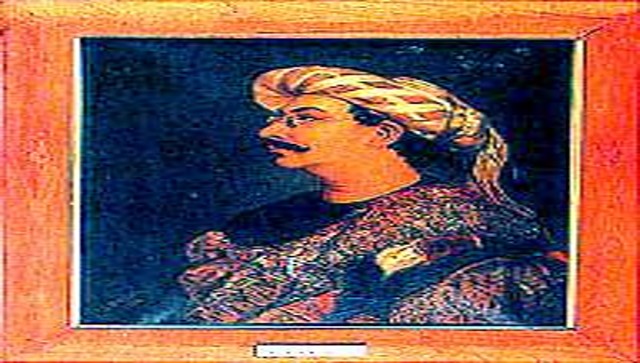)




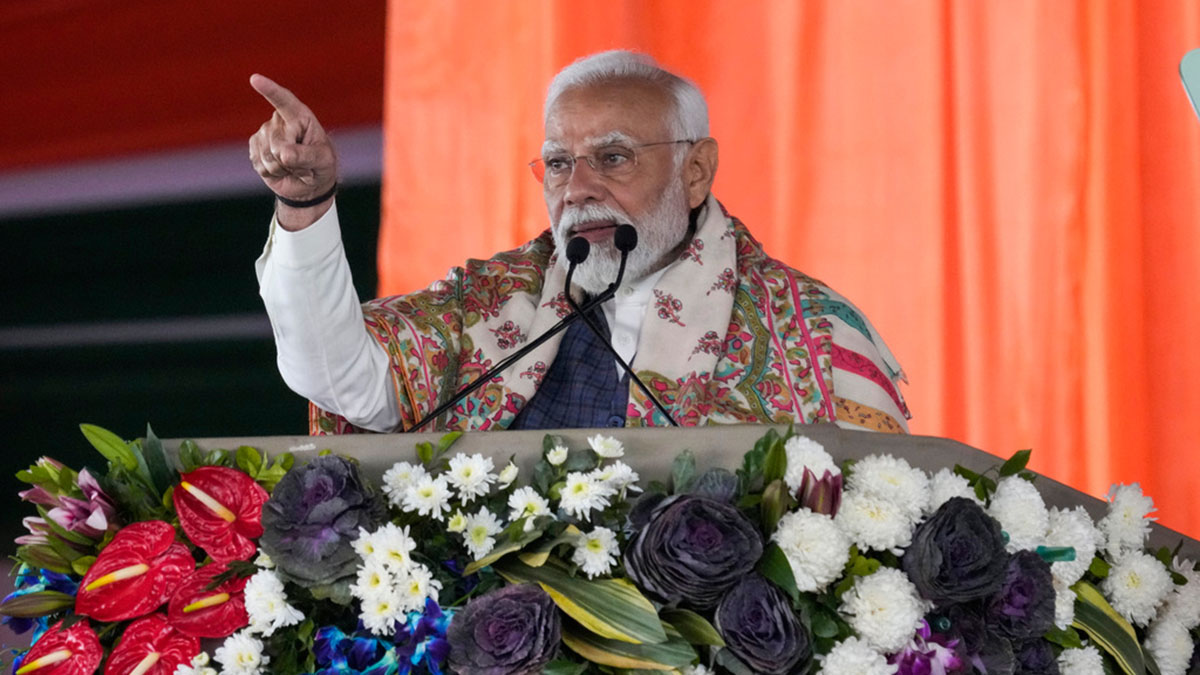)
)
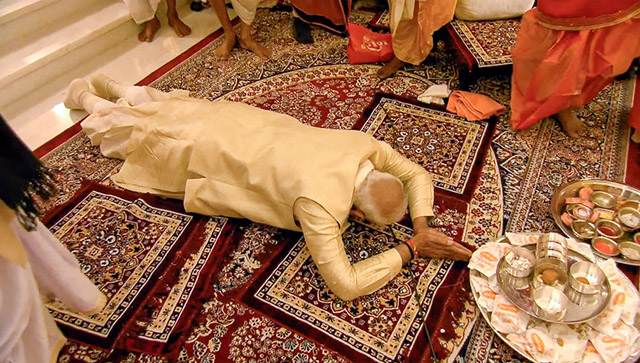)
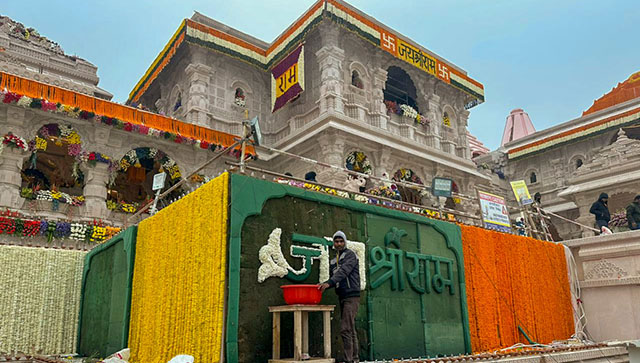)
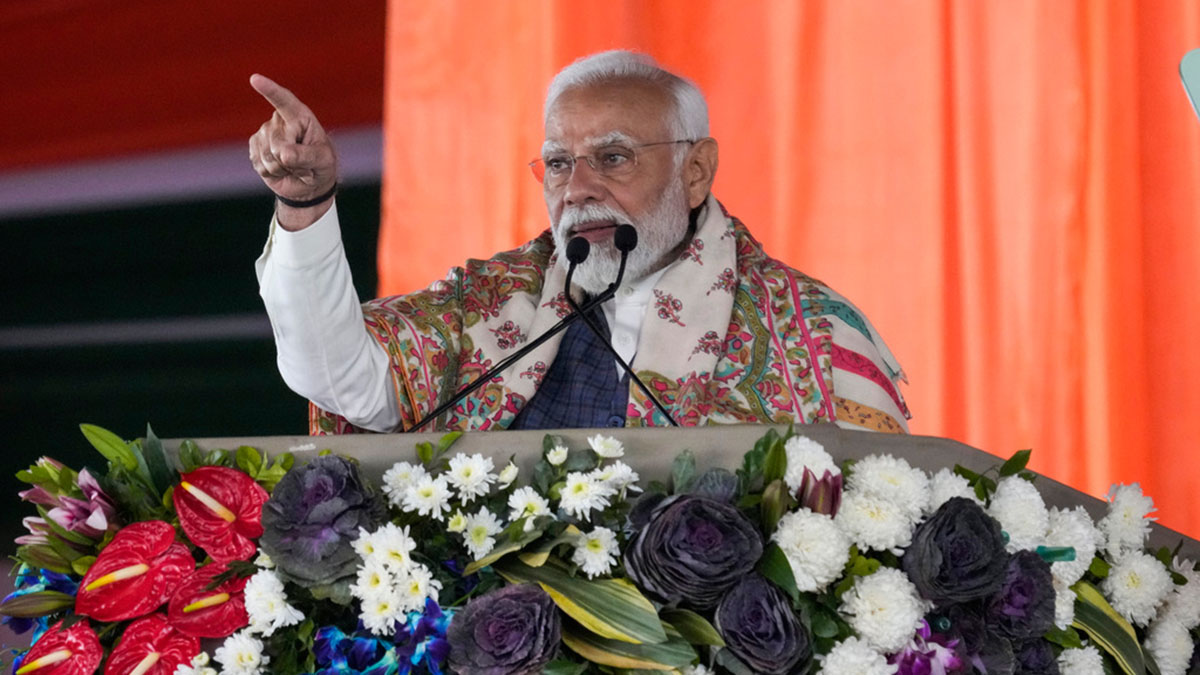)
)
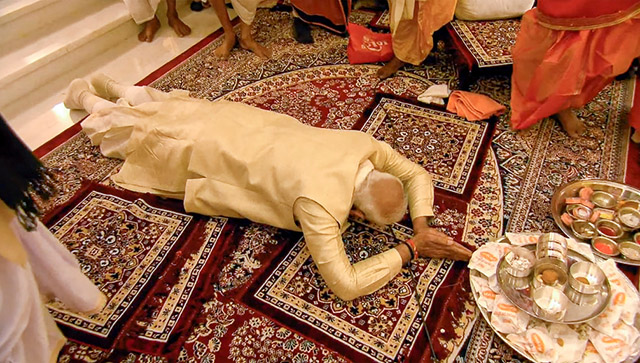)
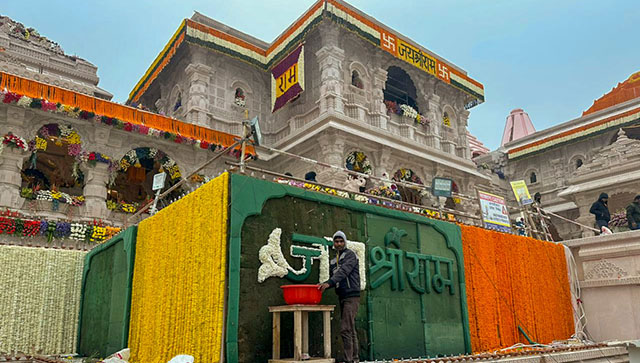)